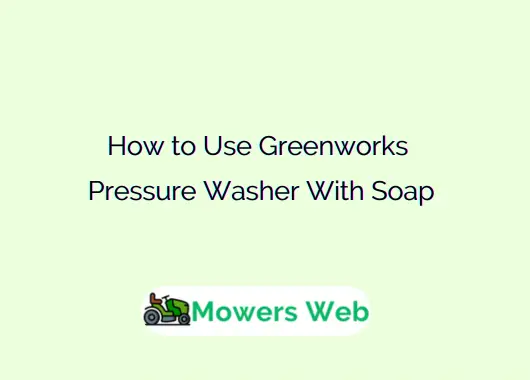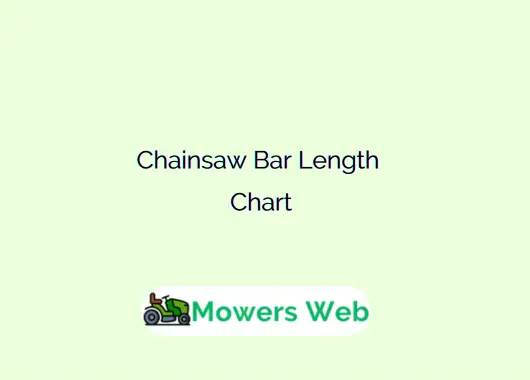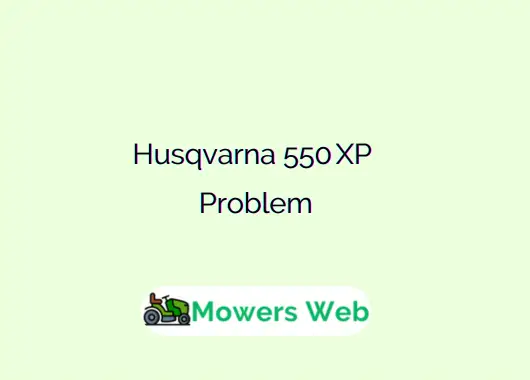Using soap with your pressure washer enhances its cleaning power, helping to break down tough dirt, grease, and grime while protecting surfaces from damage.
In this comprehensive guide, we’ll walk you through the benefits of using soap with a Greenworks pressure washer, how to choose the right soap, and a detailed step-by-step process to achieve sparkling results.
How to Use Greenworks Pressure Washer With Soap
Step 1: Prepare the Area
Before starting, clear the cleaning area of obstacles, toys, or debris to ensure safety and prevent damage. If cleaning near plants or sensitive surfaces, cover them to protect against overspray. Wear protective gear, including safety goggles, gloves, and closed-toe shoes, to shield yourself from water spray and chemical splashes. Ensure the pressure washer is placed on a stable surface and connected to a clean, cold water source.
Step 2: Select and Attach the Soap Nozzle
Greenworks pressure washers typically come with multiple nozzles for different tasks. To apply soap, use the low-pressure soap nozzle (often black with a 65-degree spray pattern). This nozzle reduces water pressure, allowing the soap to cling to surfaces and penetrate dirt effectively. Attach the soap nozzle securely to the spray gun, following the user manual’s instructions.
Step 3: Mix and Load the Soap
Check your pressure washer’s soap dispenser or tank, usually located near the water inlet. If your model has a built-in detergent tank, fill it with the appropriate soap, diluted according to the manufacturer’s instructions (typically 1-2 ounces of soap per gallon of water).
For models without a built-in tank, attach an external soap dispenser or foam cannon. Avoid overfilling to prevent clogs or excessive foaming. Never mix different types of soaps, as this can cause chemical reactions or damage the machine.
Related What Type of Oil for a Pressure Washer(+Top 3 Best Oil Picks)
Step 4: Apply the Soap
Turn on the pressure washer and let it run for a few seconds to build pressure. Switch the machine to the “soap” setting, if available, to reduce pressure for detergent application.
Holding the spray gun 2-3 feet from the surface, apply the soap in smooth, overlapping strokes, working from the bottom up to prevent streaking. Allow the soap to dwell for 3-5 minutes to break down dirt, but don’t let it dry on the surface, especially in direct sunlight.
Step 5: Rinse Thoroughly
After the soap has had time to work, switch to a high-pressure rinsing nozzle (such as the 25-degree green tip). Rinse the surface from top to bottom to remove all soap residue and loosened debris. Thorough rinsing prevents streaks and ensures a clean finish. For delicate surfaces, maintain a safe distance to avoid damage.
Step 6: Clean and Store the Pressure Washer
After use, clean the soap dispenser and nozzle with fresh water to prevent clogs from soap residue. Rinse the hose and spray gun as well. Store the pressure washer in a dry, safe place, ensuring the hose is coiled properly to avoid kinks. Regular maintenance extends the life of your Greenworks pressure washer.
Related Greenworks Battery Compatibility Chart(For All Models)
Why Use Soap with a Greenworks Pressure Washer?
Pressure washers are powerful tools that use high-pressure water jets to blast away dirt and debris. However, water alone often isn’t enough to tackle stubborn stains like oil, grease, or mildew. Soap, or detergent specifically designed for pressure washers, contains surfactants that emulsify dirt and grime, making it easier to lift and rinse away. Here are some key benefits of using soap with your Greenworks pressure washer:
- Enhanced Cleaning Power: Soap breaks down tough stains, leaving surfaces cleaner and streak-free.
- Surface Protection: Using soap reduces the need for excessive pressure, which can prevent damage to delicate surfaces like wood or paint.
- Efficiency: Soap enables you to clean larger areas more quickly, thereby reducing water and energy usage.
- Eco-Friendly Options: Many pressure washer soaps, especially those compatible with Greenworks models, are biodegradable and safe for the environment.
Related Where is Serial Number On Greenworks Mower(5 Locations)
Choosing the Right Soap for Your Greenworks Pressure Washer
Not all soaps are suitable for pressure washers. Using the wrong type, such as dish soap or laundry detergent, can create excessive foam, clog the machine, or damage surfaces. Here’s how to select the right soap:
- Pressure Washer-Specific Soaps: Choose soaps labeled as “pressure washer safe” or “compatible with pressure washers.” These are formulated to work with the machine’s high-pressure system and produce minimal foam.
- Task-Specific Detergents: Select a soap based on the surface you’re cleaning. For example:
- Car Wash Soap: Gentle on vehicle paint and effective against road grime.
- Concrete/Driveway Soap: Designed to tackle oil stains and mildew.
- All-Purpose Soap: Ideal for siding, fences, and outdoor furniture.
- Biodegradable Options: For eco-conscious cleaning, opt for biodegradable soaps made from natural ingredients, which are safe for plants, pets, and children.
- Dilution Ratios: Always check the manufacturer’s instructions for the recommended soap-to-water ratio. Over-concentrated soap can create too much foam, while under-diluted soap may not clean effectively.
Greenworks recommends using their branded pressure washer soaps or other high-quality, pressure washer-compatible detergents to ensure optimal performance and avoid damage to the machine.
Related How to Repair Expandable Garden Hose(In 5 Quick Steps)
Tips for Optimal Soap Usage
To maximize your cleaning results, keep these tips in mind:
- Test in a Small Area: Before applying soap to a large surface, test it in an inconspicuous spot to ensure it won’t cause discoloration or damage.
- Pre-Rinse Surfaces: Rinse loose dirt and debris with plain water before applying soap for better penetration.
- Avoid Harsh Chemicals: Never use bleach or abrasive cleaners, as they can damage the pressure washer’s pump or void the warranty.
- Adjust Soap Concentration: For tougher stains, slightly increase the soap concentration, but always stay within the manufacturer’s guidelines.
- Reapply if Needed: For heavily soiled areas, you may need to apply soap a second time after rinsing.
Common Mistakes to Avoid
- Using Too Much Soap: Excessive soap creates foam that’s hard to rinse and can clog the machine.
- Not Rinsing Properly: Leftover soap residue can attract dirt, leaving surfaces streaky.
- Using the Wrong Soap: Avoid dish soap or laundry detergent, as they can damage the pressure washer or surfaces.
- Applying Soap in Direct Sunlight: Soap can dry too quickly, leaving residue or streaks.
Final words
Using a Greenworks pressure washer with soap is a game-changer for tackling tough outdoor cleaning tasks. By choosing the right soap, following the proper steps, and adhering to safety and maintenance guidelines, you can achieve professional-quality results while keeping your surfaces and pressure washer in top condition.
Whether you’re cleaning a car, driveway, or patio, the combination of Greenworks’ eco-friendly technology and the right detergent ensures a sparkling clean finish every time.




